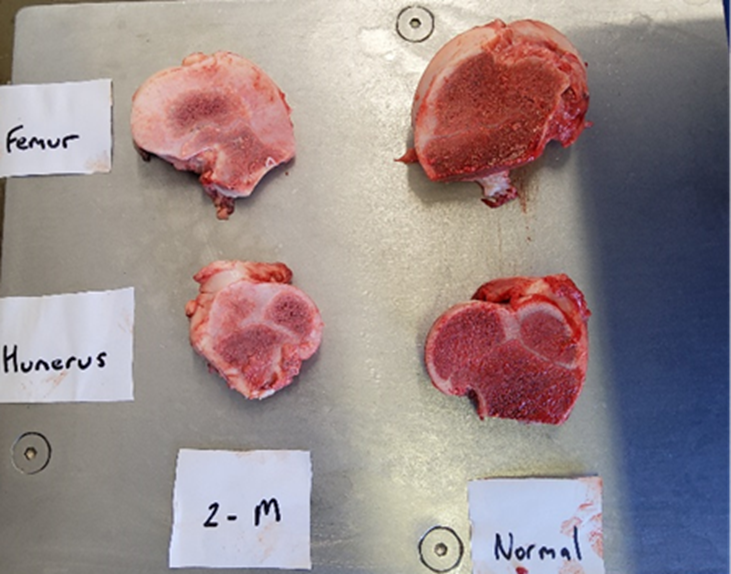Long Bone Deformity: Now Is the Time to Act

During the spring calving season of 2025, several cases of Long Bone Deformity (LBD) were diagnosed in suckler herds. Unfortunately, by the time calves are born with this condition, there is little that can be done.
However, late autumn—around the time of housing and ration changes—is the key moment to take preventive action. While predicting which herds are at greatest risk is difficult, discussing potential risks and mitigation strategies with suckler producers now can make a real difference for the 2026 calving season.
What is Long Bone Deformity?
LBD is a congenital condition that presents at birth. Affected calves are often dwarfed, with shortened long bones and abnormal joint development.
Typical signs include:
-
Shortened limbs and restricted movement in the proximal joints
-
Laxity of distal joints
-
Domed skulls and brachygnathia (short jaw)
-
Some calves may be stillborn, while others are born alive but unable to stand or suckle, often requiring euthanasia on welfare grounds.
The photo above shows abnormal epiphyses in affected animals (left), with markedly thinner epiphyseal cartilage compared to the normal femur/humerus (right). The second image illustrates an affected calf, showing the domed head, short limbs, and abnormal joints characteristic of the condition.
What Causes LBD?
LBD has been linked to the nutrition of the dam during months 4–5 of gestation, a critical period for foetal bone and joint development.
A key hypothesis is that Manganese (Mn) deficiency in the cow during this stage contributes to the problem. Interestingly, this deficiency may occur despite apparently adequate Mn levels on forage analysis.
It is believed that a compound within grass silage interferes with Mn absorption, particularly in:
-
Pit silages, which are higher quality, made from fast-growing and wetter grass
-
Red clover silages, which have also been linked to higher incidence
Big bale silage and hay seem to pose less risk.
Reducing Risk for the 2026 Calving Season
Preventative management should begin as winter diets are formulated. Recommended strategies include:
-
Monitor manganese status:
-
Take blood samples from cows one week after starting the winter ration to check Mn levels.
-
-
Balance forage sources:
-
Feed a maximum of 75% grass silage and 25% straw in the ration to reduce silage dependency.
-
-
Avoid high-risk silages:
-
Where possible, avoid high-quality, wet pit silages during the critical 4–5 month gestation window.
-
-
Provide targeted Mn supplementation:
-
Cows require approximately 1000 mg Mn/day.
-
Use mineral supplements with an inclusion rate of at least 7000 mg/kg Mn, or consider targeted injectable Mn supplementation during the risk period.
-
Key Takeaway
LBD is a distressing but largely preventable condition. By assessing mineral status, adjusting silage use, and targeting Mn supplementation this autumn, suckler herds can significantly reduce risk for next year’s calving season.
Now is the time to act.
Posted by SRUC Veterinary Services on 16/10/2025
